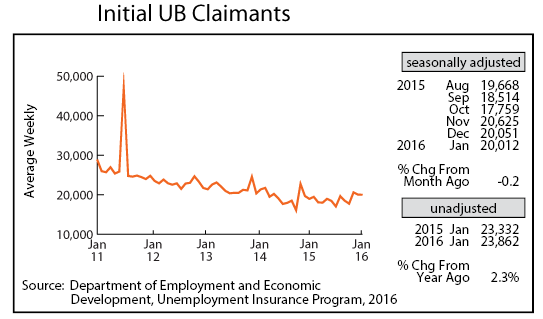by Dave Senf
February 2016
Note: All data except for Minnesota’s PMI have been seasonally adjusted. See the feature article in the Minnesota Employment Review, May 2010, for more information on the Minnesota Index.
The Minnesota Index, U.S. Index, and Minnesota Leading Index are generated by the Philadelphia Federal Reserve Bank. At the beginning of each year the indices are delayed by two months as revised component numbers are used to recalibrate the indices. January’s indices are scheduled for release on April 6.
Adjusted Wage and Salary Employment started the year on a sour note, dropping by 5,000 jobs in January. Most of the job loss was centered in the public sector which shed 3,800 jobs. Layoffs were also high in Trade, Transportation, and Utilities, Information, and Professional and Business Services. Strong job growth in Educational and Health Services and Construction, seasonally adjusted, offset most of the job cutbacks in other private sectors.
Minnesota’s unadjusted over-the-year job growth ticked up to 1.4 percent in January, the highest level since last August. U.S. job growth was 1.9 percent making last month the 18th consecutive month Minnesota job growth has lagged behind national job growth. This is the longest streak of subpar job growth in Minnesota compared to the U.S. since the 25 consecutive subpar months in from over the 2006 to 2008 period.
Revised employment numbers for last year show that Minnesota’s job growth inched up in 2015 to 1.5 percent from 1.4 percent in 2014 on an annual average basis. The state added 41,900 jobs on an annual average basis in 2015 compared to 38,500 in 2014. Minnesota’s annual job growth has lagged behind the national pace in three of the past four years but has outpaced national job growth in five of the past eight as the state lost fewer jobs during the Great Recession and rebounded faster in 2010 and 2011.
Minnesota accounted for 1.90 percent of U.S. jobs during the 1970s, 1.93 percent in the 1980s, 2.02 percent in the 1990s, and 2.03 percent from 2000 – 2009. Between 2010 and 2015 the state averaged 2.03 percent of national employment. That share slipped to 2.01 percent last year as job growth in the state lagged significantly behind U.S. growth over the last two years. The difference between Minnesota’s having 2.01 or 2.03 percent of national employment is roughly 28,000 jobs.
Minnesota’s 1.5 percent annual average job gain last year ranked 25th among states right behind Hawaii and right ahead of New Hampshire. Utah set the pace with a 3.8 percent jump while North Dakota fared the worst with a 1.6 percent decline. Minnesota had better job growth in 2015 than all of the neighboring states: Wisconsin (1.3 percent), South Dakota (1.0 percent), Iowa (1.0 percent), and North Dakota (-1.6 percent).
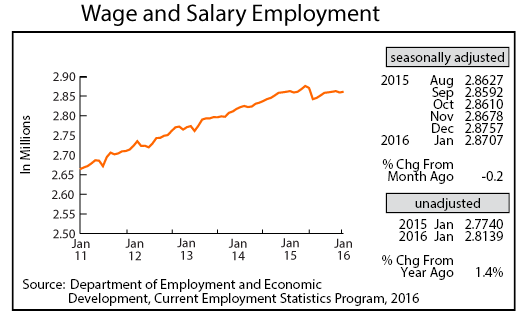
Revised Minnesota adjusted online Help-Wanted Ads showed a surge to a record high of 144,800 in January. Minnesota’s online ads rose 4.5 percent in January while online ads increased 0.2 percent nationwide. Average monthly online postings were 10 percent higher in 2015 than 2014, indicating that demand for workers remains robust in Minnesota. Higher online job advertising may also be a sign that employers are having a harder time finding workers leading to more intensive online recruiting.
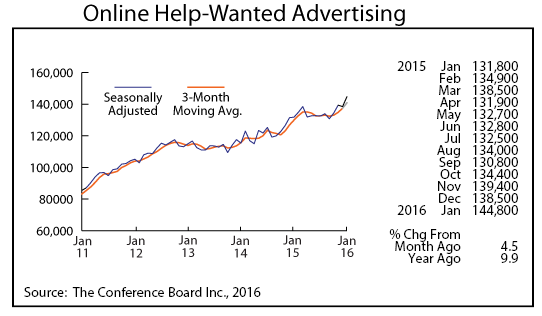
After plunging in December to a recession level reading of 39.4, Minnesota’s Purchasing Managers’ Index (PMI) spiked to 50.1 in January. January’s reading is more consistent with other indicators that point towards the Minnesota economy expanding at a solid pace. Manufacturing activity in the state has slowed but other sectors of the economy continue to expand.
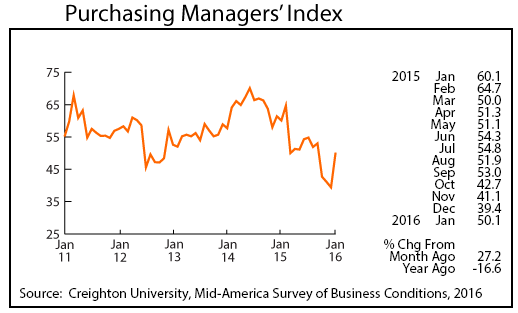
Adjusted Manufacturing Hours continued to rebound for the second consecutive month, increasing to 41.4 hours in January. That was the longest factory workweek since November 2014. The manufacturing hours turnaround maybe a sign that Minnesota manufacturers have regained some momentum. Higher manufacturing hours have yet to show up in average weekly Manufacturing Earnings. Factory paychecks fell for the second straight month in January, slipping to $815.32. That is the lowest level since April 2015 and in real terms 1.5 percent lower than a year ago.
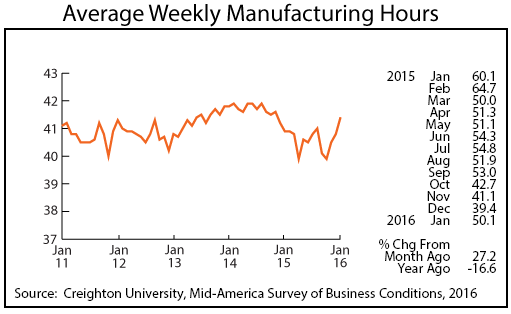
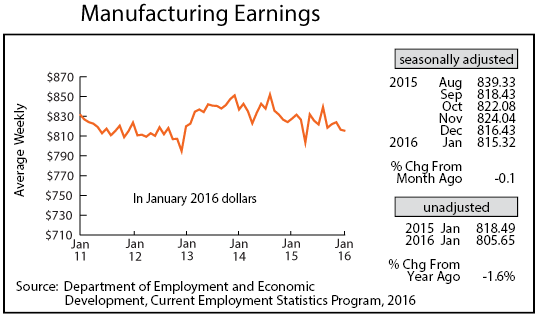
Adjusted Residential Building Permits rebounded in January to 1,669. Unadjusted permit numbers, however, were 31.9 percent below a year ago which means that home building is getting off to a slow start in 2016.
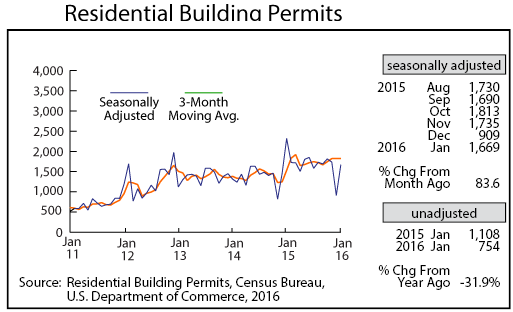
Adjusted Initial Claims for Unemployment Benefits (UB) were essentially unchanged in January. January’s unadjusted 23,862 initial claims is up 2.3 percent from January 2015 but remains low by historic standards. Over the last 46 years initial claims as a percent of wage and salary employment has average 1.01 percent. January’s percent is 0.70 percent. The lowest percent, 0.53, was achieved in May 1998.
